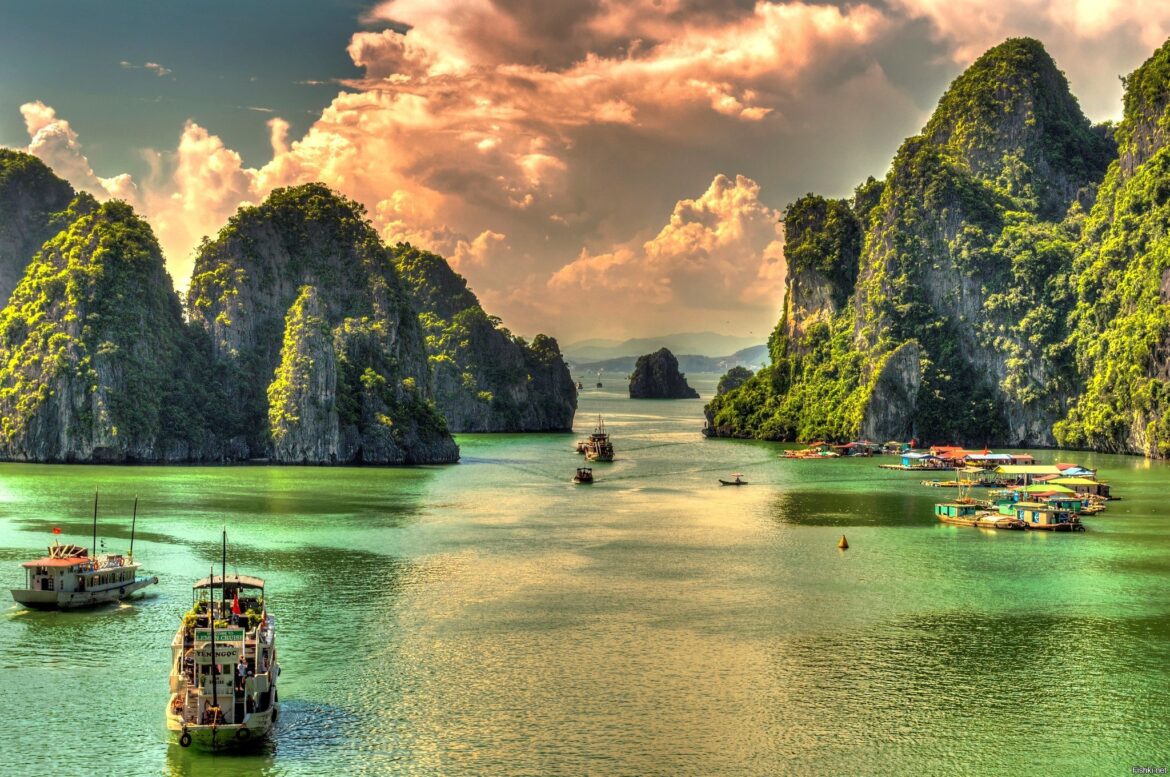Vietnam is one of Southeast Asia’s most captivating destinations. From misty mountains in the north to sun-drenched beaches in the south, this long, slender country offers a unique blend of natural wonders, vibrant cities, and deep-rooted cultural heritage. Its mix of tradition and modernity, combined with warm hospitality and unforgettable cuisine, has made Vietnam an increasingly popular choice for travelers seeking both adventure and authenticity.
Hanoi: The Cultural Capital
Begin your journey in Hanoi, Vietnam’s thousand-year-old capital. Here, ancient temples stand beside French colonial buildings, and bustling markets spill into chaotic but charming streets. The Old Quarter is a maze of narrow alleys filled with street food vendors, local crafts, and centuries of history.
Don’t miss a visit to the Ho Chi Minh Mausoleum, the Temple of Literature, and Hoan Kiem Lake, a tranquil spot in the city’s heart. Hanoi also offers excellent museums, including the Vietnam Museum of Ethnology and the Vietnamese Women’s Museum, offering insights into the country’s diverse culture and history.
Ha Long Bay: A Natural Wonder
A few hours from Hanoi lies Ha Long Bay, one of Vietnam’s most iconic destinations. This UNESCO World Heritage Site is known for its emerald waters and thousands of limestone karsts rising dramatically from the sea. Cruising through the bay aboard a traditional junk boat is a must-do experience, with opportunities for kayaking, swimming, or simply admiring the surreal landscape.
Sapa and the Northern Highlands
For those who love mountains and trekking, head north to Sapa, where terraced rice fields cling to steep hillsides and ethnic minority villages dot the landscape. Trekking through the Muong Hoa Valley, meeting local Hmong, Dao, and Tay people, and staying in a homestay provide unforgettable cultural encounters and panoramic views of misty peaks.
Central Vietnam: History and Heritage
The central region of Vietnam is home to some of the country’s most significant historical and cultural sites. Hue, the former imperial capital, boasts the Imperial City, ancient tombs of Nguyen emperors, and tranquil riverside settings.
Nearby, Hoi An is a charming town recognized as a UNESCO World Heritage Site. Famous for its lantern-lit streets, preserved merchant houses, and tailor shops, Hoi An is a delightful place to explore on foot or by bicycle. The nearby My Son Sanctuary, once a center of the Champa Kingdom, adds an archaeological dimension to the region.
Further along the coast, Da Nang offers beautiful beaches and access to the striking Marble Mountains and Golden Bridge, a modern architectural marvel held by giant stone hands.
Ho Chi Minh City: The Pulse of the South
Formerly known as Saigon, Ho Chi Minh City is Vietnam’s largest metropolis and economic engine. The city is a mix of colonial-era architecture, gleaming skyscrapers, and lively street life. Highlights include the War Remnants Museum, Notre-Dame Cathedral, and Ben Thanh Market.
The city’s energy is contagious, with endless opportunities to experience Vietnam’s dynamic urban culture—from rooftop bars and modern art galleries to bustling food stalls offering dishes like pho, banh mi, and com tam.
The Mekong Delta: Life on the Water
To experience Vietnam’s rural soul, head to the Mekong Delta, a fertile region where life revolves around rivers and canals. Known as the “rice bowl” of Vietnam, the delta is home to floating markets, lush orchards, and stilted villages. A boat trip along its waterways offers a peaceful contrast to the country’s busy cities, revealing the rhythms of traditional life.
Popular stops include Can Tho with its bustling Cai Rang Floating Market, and Ben Tre, famous for coconut farms and quiet river cruises.
Vietnamese Cuisine: A Journey in Itself
No visit to Vietnam is complete without indulging in its world-famous cuisine. Vietnamese food is all about balance—sweet and salty, hot and cool, crispy and soft. Each region has its own specialties:
In the north: Pho (noodle soup with beef or chicken) and bun cha (grilled pork with rice noodles).
In the center: Mi Quang (turmeric noodles with shrimp, pork, and herbs) and banh xeo (crispy rice pancakes).
In the south: Hu Tieu (southern noodle soup) and goi cuon (fresh spring rolls).
Street food is a cultural staple in Vietnam, and travelers are encouraged to eat like locals at bustling markets and roadside stalls.
Travel Tips
Best time to visit: March to April and September to November offer mild temperatures and less rain.
Currency: Vietnamese Dong (VND). The cost of travel is relatively low compared to many countries.
Transport: Domestic flights, buses, and the railway system connect most major cities. Motorbike rentals are popular for local exploration.
Visas: Many nationalities can apply for an e-visa online before arrival.
A Country of Contrasts and Harmony
Vietnam is a land where ancient traditions coexist with modern progress, where jungle-covered mountains meet pristine beaches, and where every meal tells a story. Whether you are seeking cultural immersion, natural beauty, or culinary discovery, Vietnam delivers with charm, warmth, and a sense of adventure.
From the first bite of street-side pho to the last sunset over Ha Long Bay, Vietnam invites travelers to slow down, look deeper, and embrace the richness of its land and people.


